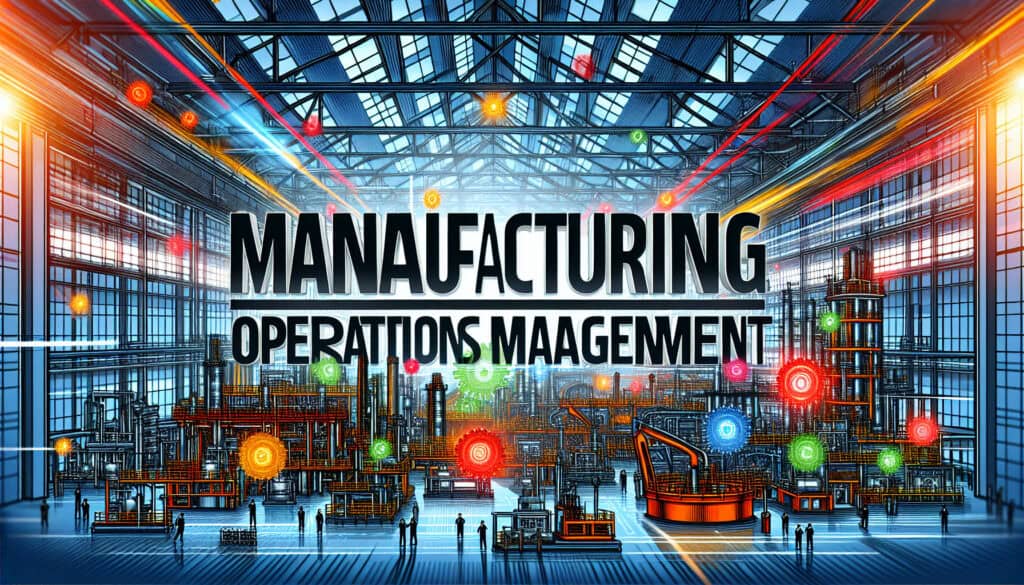A holistic approach to managing the end-to-end 制造业 process.
- 方法: 构思, 产品设计
制造运营管理(MOM)

制造运营管理(MOM)
- 持续改进, 工业自动化, 精益制造, 制造业, 流程改进, 工艺优化, 生产效率, 质量保证, 质量管理
目标
如何使用
- A broad category of software and systems that manage all aspects of manufacturing operations, from production and inventory to quality and maintenance. It aims to optimize efficiency across the entire manufacturing process.
优点
- Provides a holistic view of manufacturing operations; Can lead to significant improvements in efficiency and quality.
缺点
- Can be complex and expensive to implement; Requires a high degree of integration between different systems.
类别
- 精益西格玛, 制造业, 项目管理
最适合:
- Optimizing the entire manufacturing process in a large and complex organization.
Manufacturing Operations Management (MOM) encompasses a range of applications designed to oversee and improve various facets of manufacturing processes, making it particularly valuable in industries such as automotive, aerospace, consumer goods, pharmaceuticals, and electronics. In the project phase of implementation, it is often initiated by operations managers and involves collaboration among cross-functional teams, including engineering, quality assurance, supply chain management, and IT specialists, ensuring comprehensive integration of manufacturing activities. Typical systems within MOM include Manufacturing Execution Systems (MES), which monitor real-time production data; Quality Management Systems (QMS), that maintain standards throughout production; and Inventory Management Systems, which optimize stock levels and reduce waste. The use of MOM allows organizations to track key performance indicators (KPIs) across processes, facilitating data-driven decisions that enhance production throughput while minimizing downtime. Continuous improvement methodologies such as Lean Manufacturing and Six Sigma are often aligned with MOM systems, delivered through software solutions that automate data collection and analysis, thereby increasing both efficiency and output quality. Companies employing these methodologies often report significant cost savings, reduced cycle times, and improved employee engagement, driven by a culture of data transparency and operational excellence.
该方法的关键步骤
- Identify key manufacturing processes and workflows needing optimization.
- Implement real-time monitoring and data collection systems across operations.
- Analyze performance data to identify bottlenecks and inefficiencies.
- Establish metrics to measure efficiency, quality, and other operational goals.
- Utilize advanced analytics and modeling to predict and mitigate potential issues.
- Integrate automation and technology solutions where applicable.
- Adopt lean manufacturing principles to eliminate waste and streamline processes.
- Enhance supply chain visibility for better inventory management.
- Develop and implement strategies for continuous improvement.
- Conduct regular training and development for staff on new systems and processes.
- Evaluate maintenance processes and implement predictive maintenance practices.
专业提示
- Implement real-time data analytics to monitor production metrics and equipment performance, enabling proactive decision-making and minimizing downtime.
- Utilize advanced forecasting tools in inventory management to adjust production schedules based on demand variability and optimize stock levels.
- Integrate cross-functional collaboration platforms to enhance communication between engineering, operations, and supply chain teams, improving alignment and problem-solving capabilities.
Historical Context
1949
1950
1950
1960
1960
1960
1960
1940
1950
1950
1958
1960
1960
1960
1960
(if date is unknown or not relevant, e.g. "fluid mechanics", a rounded estimation of its notable emergence is provided)















相关文章
肌肉骨骼不适调查表
多变量测试(MVT)
多元回归分析
动作捕捉系统
MoSCoW 方法
情绪中值测试